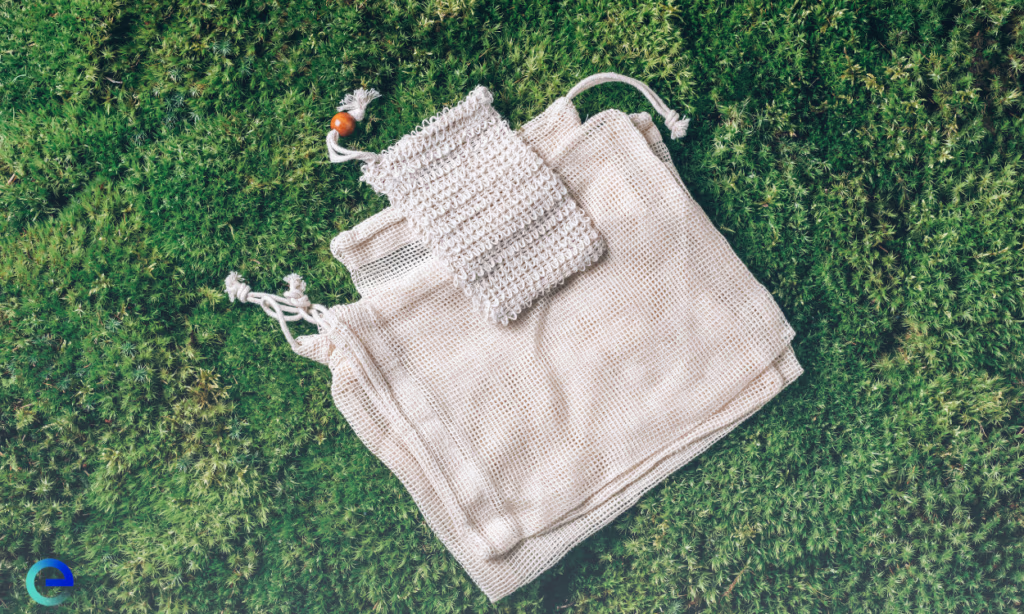
The textile industry stands at a critical juncture, facing mounting pressure to address its environmental impact and embrace sustainable practices. With the fashion sector responsible for a significant portion of global greenhouse gas emissions, there’s an urgent need for sustainable textiles and circular economy solutions. The European Green Deal and the EU Strategy for Sustainable and Circular Textiles are driving forces behind this transformation, pushing for eco-friendly fashion and closed-loop fashion systems.
To tackle these challenges, the industry is exploring innovative approaches to create sustainable textiles and products and reduce its environmental footprint.
The textile industry is undergoing a significant transformation as it embraces sustainable practices. This shift is driven by market trends, consumer demand, and the potential for cost savings through resource efficiency. Additionally, brands are recognizing the competitive advantage that comes with a strong reputation for sustainability.
Market trends and consumer demand
Consumer awareness regarding sustainability has been steadily increasing in Europe. Studies show that 38% of consumers in Europe’s five largest markets consider fashion brands’ social and environmental impact when shopping. In 2022, 46.5% of Europeans purchased sustainable fashion items, and more people now view sustainable textiles and products as fashionable. This growing demand for eco-friendly fashion has prompted brands to adapt their strategies and offerings.
Cost savings through resource efficiency
Implementing resource efficiency measures in textile production has the potential to yield substantial cost savings. A report suggests that simple, practical improvements in wet processing could save the industry USD 4.79 billion annually. These improvements include reusing cooling water, recovering heat from hot water, and enhancing boiler efficiency. By investing in these changes, facilities have achieved average annual water savings of 11.5% and a 10.8% reduction in greenhouse gas emissions.
Brand reputation and competitive advantage
Sustainable practices have a strong impact on brand reputation and competitive advantage. Companies with strong sustainable management and growth capabilities can more easily attract consumers and investors seeking socially responsible investments. This enhanced brand reliability increases loyalty among consumers and investors, positioning sustainable brands ahead in global competition. As the value of ESG (Environmental, Social, and Governance) practices continues to rise, fashion brands that incorporate these practices into their operations are likely to see improvements in their reputations, which in turn actively induce consumer purchase intentions.
The textile industry is witnessing a surge in innovative materials and production processes aimed at creating sustainable textiles and reducing environmental impact. These advancements are crucial in addressing the challenges posed by fast fashion and the need for eco-friendly fashion alternatives.
Next-generation sustainable fibers
Researchers and startups are developing new fibers to replace both polyester and natural fibers with more sustainable alternatives. Gene editing and fermentation processes are being used to create fibers like Microsilk and Werewool, which offer improved efficiency compared to traditional silk production. Squitex, a squid protein-based fiber, and Spiber’s Brewed Protein are promising replacements for polyester and silk, offering stretch, strength, and thermal responsiveness.
Waterless dyeing and finishing techniques
Textile dyeing is a major contributor to water pollution and consumption. To address this issue, waterless dyeing techniques have emerged as a sustainable solution. The DyeCoo technology uses carbon dioxide instead of water for dyeing, eliminating the need for processing chemicals and reducing energy consumption. Another innovative approach is the Greendye technology, which dyes jeans without using water and reduces chemical usage by 50%.
3D printing and zero-waste manufacturing
3D printing technology is revolutionizing the fashion industry by enabling zero-waste manufacturing. This process allows for the creation of intricate designs without the need for rafts and supporters, which typically become waste in traditional 3D printing . By designing objects with flat bases and balanced structures, designers can minimize waste and create sustainable fashion accessories . The technology also facilitates on-demand manufacturing, reducing overproduction and inventory waste in the fashion industry.

The transition towards a circular economy in the textile industry has been facilitated with the use of digital technologies. These innovations are enhancing traceability, transparency, and efficiency throughout the supply chain, contributing to more sustainable practices and sustainable textiles.
Blockchain for supply chain traceability
Blockchain technology has also emerged as a powerful tool for ensuring transparency and traceability in textile supply chains. By leveraging blockchain, manufacturers can record and track every step of the production process on an immutable and decentralized ledger. This way, brands and consumers can have complete visibility into the origin, authenticity, and quality of textile products . The technology’s ability to encrypt and link transactions along the supply chain safeguards against counterfeiting and fraud, promoting ethical sourcing and sustainability.
AI and machine learning in textile recycling
Artificial intelligence (AI) and machine learning could not but revolutionize textile recycling processes. These technologies are utilized to develop smart sorting systems that can accurately identify and separate different fiber types, addressing one of the key challenges in textile recycling. Advanced sensors and imaging systems, such as near-infrared spectroscopy and hyperspectral imaging, enable the detection of fiber composition and contaminants in textile waste . AI-driven robotic systems are also being employed to handle complex tasks such as removing hard elements like buttons and zippers, preparing textiles for more efficient recycling.
Digital product passports
Digital product passports are emerging as a crucial tool for promoting circularity in the textile industry. These passports provide detailed information about a product’s composition, origin, environmental impact, and instructions for repair, maintenance, and recycling. The European Commission has introduced the concept of Digital Product Passports as part of its strategy for fostering environmentally sustainable textiles and circular products. These passports, often accessible through QR codes or other data carriers, empower consumers to make informed decisions and facilitate more effective recycling and reuse of textile products.
The transition towards sustainable textiles and a circular economy in the fashion industry requires a collaborative approach involving various stakeholders. Cross-industry partnerships, research initiatives, and knowledge sharing are crucial elements in driving this transformation.
Cross-industry partnerships
Companies in the textile sector are increasingly recognizing the importance of collaboration to address sustainability challenges. Leading fashion and automotive brands, including H&M, Kering, and BMW Group, have joined an initiative to halt deforestation associated with leather supply chains. This partnership emphasizes the need for equitable distribution of responsibility and investment in protecting forests and ecosystems. By engaging in such collaborations, brands can work towards greater transparency and promote deforestation-free practices throughout their supply chains.
Research and innovation initiatives
For sustainable textiles to keep advancing, it is required constant research and innovation. The UK Research and Innovation’s (UKRI) Circular Fashion Program, a £6 million scheme developed in consultation with the industry, aims to solve complex challenges across priority areas. This initiative brings together expertise from various sectors to address issues such as circular business models, novel technologies, and sustainable manufacturing. By encouraging collaboration between researchers, industry representatives, and policymakers, these initiatives drive innovation and knowledge exchange in the textile sector.
Stakeholder engagement and knowledge sharing
Effective stakeholder engagement and knowledge sharing are essential for creating a sustainable textiles ecosystem. The Circular Design Thematic Working Group, designed and delivered by CIRUCLÉIRE, guides participants through meetings, ideation workshops, and webinars to share circular innovation opportunities and highlight major barriers to circular design. Such initiatives provide platforms for diverse stakeholders to exchange ideas and best practices and collectively work towards overcoming challenges in implementing sustainable practices throughout the textile value chain.
It is clear that consumer demand, cutting-edge technologies, and cooperative efforts are accelerating the textile industry’s shift towards sustainability and circularity. From groundbreaking materials like Microsilk and Squitex to waterless dyeing techniques and 3D printing, these advancements are paving the way for eco-friendly fashion. Digital technologies such as blockchain, AI, and digital product passports contribute to enhancing traceability and efficiency throughout the supply chain.
The future of sustainable textiles hinges on continued innovation and cooperation among stakeholders. Cross-industry partnerships, research initiatives, and knowledge sharing are key to overcoming challenges and fostering a resilient, circular textile ecosystem. As the industry evolves, it’s evident that sustainability is a necessary transformation to ensure the long-term viability of the fashion sector and its positive impact on the environment.
